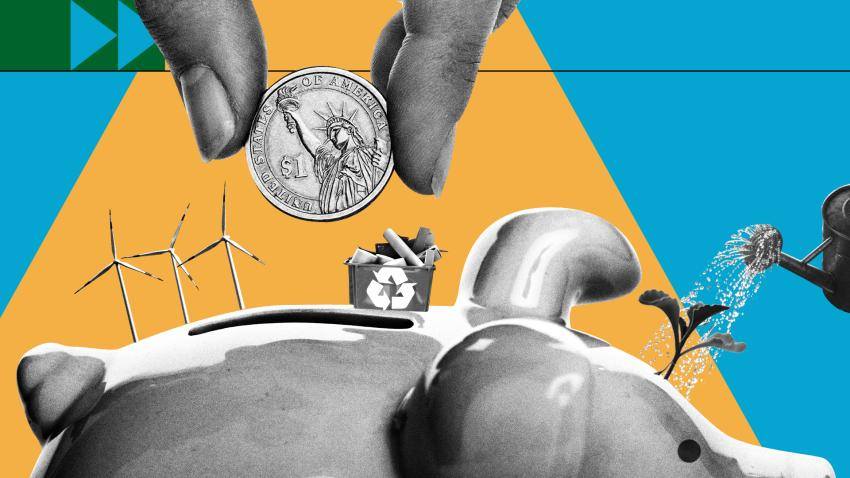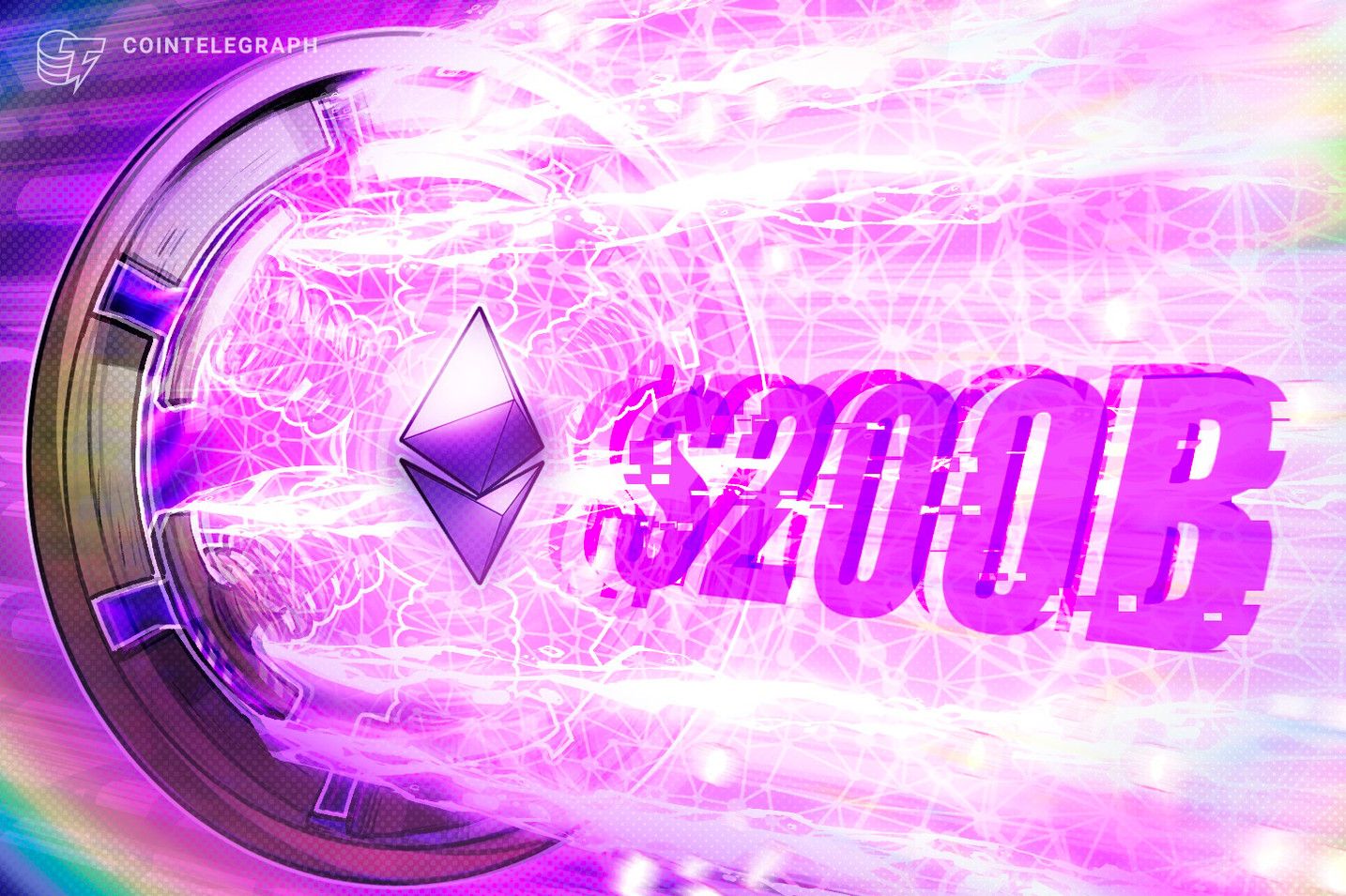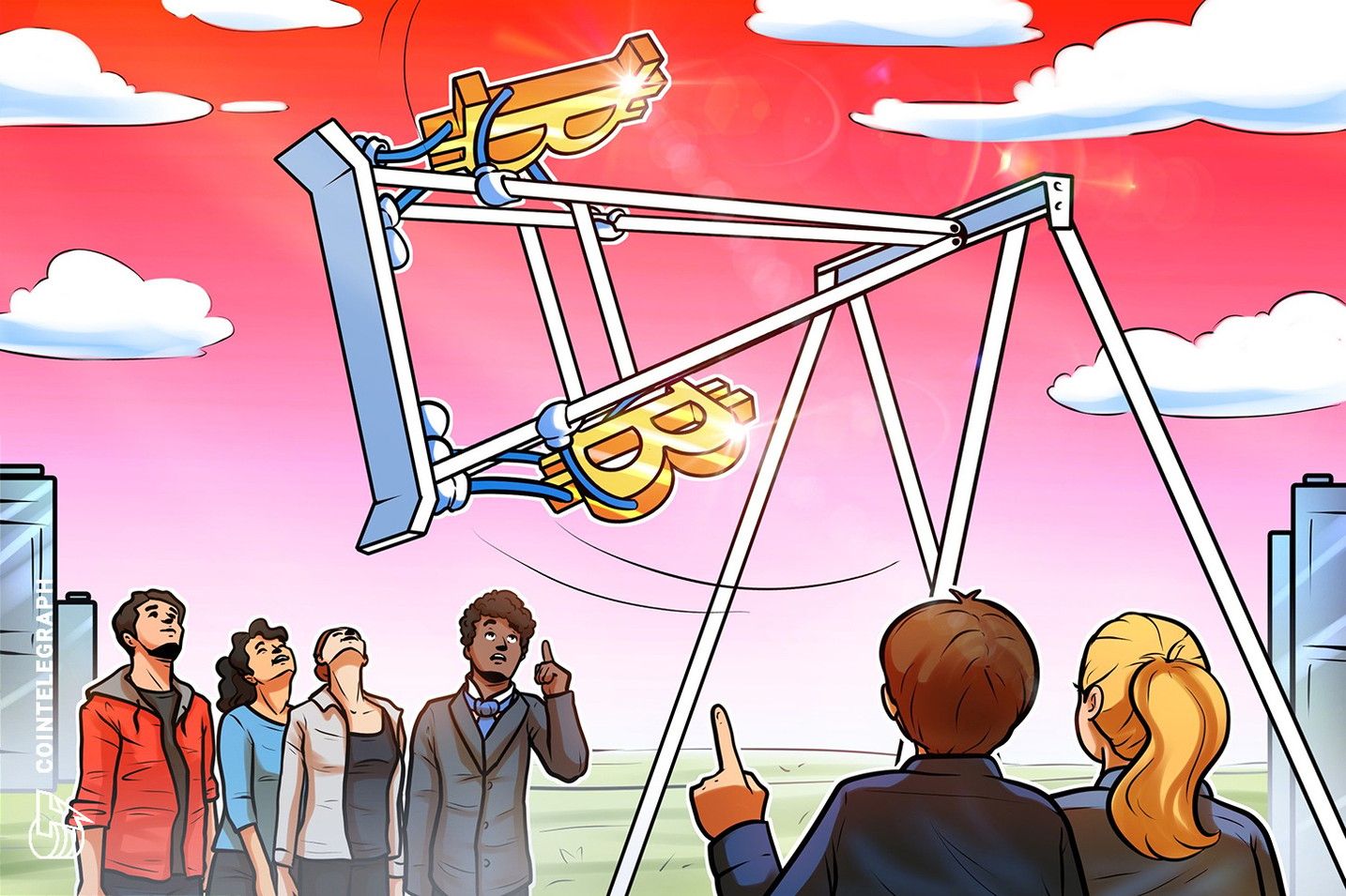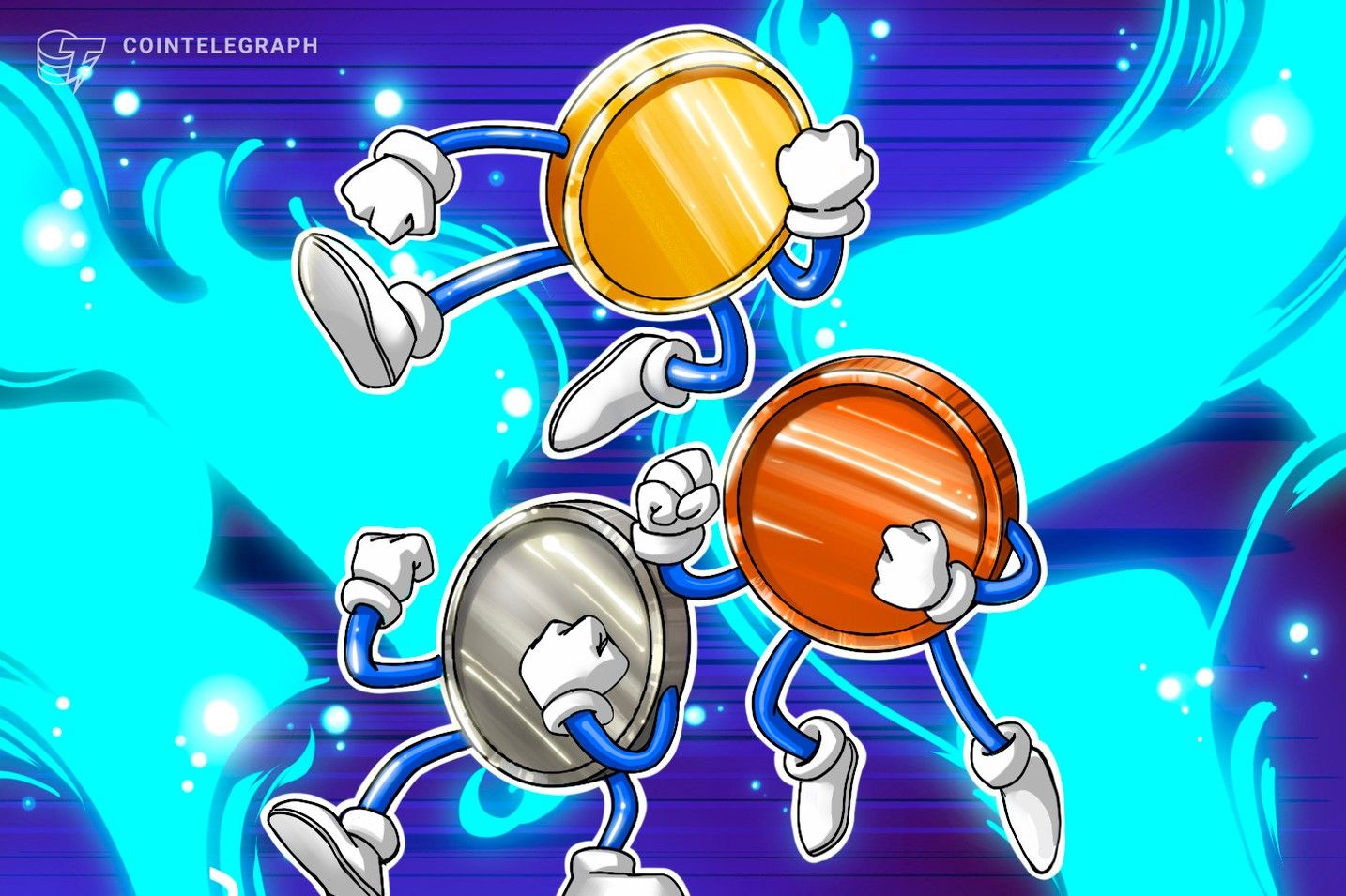The Making of a Crypto "Veteran"
The long-term survival game of cryptocurrencies.
The long-term survival game of cryptocurrency.
Written by: tradinghoe
Translated by: AididiapJP, Foresight News
In the crypto world, nothing is more important than survival. You must ensure you can keep playing every day, preserve your capital, and keep learning.
Most people don’t understand this when they first enter the space. They expect to get rich in a few months, seeing crypto as a shortcut to overnight wealth. It’s this misconception that leads most people to eventual failure.
There’s a myth circulating in crypto: as long as you stay long enough, you’ll definitely make money. People always think that after three or five years in this field, financial freedom is guaranteed.
Seeing early players, many will ask: “Why aren’t you a billionaire yet?”
But the truth is: crypto is not a get-rich-quick game, but a game of who can survive the longest. “Success” doesn’t arrive on anyone’s schedule; it only appears when preparation, capital preservation, and opportunity align.

This game isn’t won by making it through the first or second cycle, but by those who are still present, still learning, and still have capital when opportunity comes.
Survival first, profit second.
The Two Types of Truly Successful People
After spending enough time in crypto, you’ll find there are mainly two types of successful people:
1. Cross-cycle Veterans
They are battle-hardened veterans who have survived multiple full market cycles.
They’ve witnessed the 2017 ICO bubble burst, seen the rise and fall of DeFi Summer, participated in the NFT frenzy, suffered heavy losses in the FTX incident, and have been liquidated multiple times.
But they survived.
Because they regard “staying at the table” as the highest principle.
These “veterans” are covered in scars, understand what a market crash is, have been scammed, hacked, and schooled. But every disaster made them better: more discerning, more patient, more vigilant.

2. The Chosen Ones
The second type should have been eliminated many times:
They’ve lost everything, repeatedly. Lost all their assets on FTX, got liquidated on October 10th due to high leverage in the wrong direction. They bought the top, held through crashes, fell for obvious scams, and made every rookie mistake.
But for some reason, they’re still here.
Maybe they only put a small amount on FTX, maybe after liquidation they still had reserves in a cold wallet, maybe they started over again and again, maybe they got lucky and had a comeback, maybe someone helped them out. You could call it luck, fate, or simply refusing to give up.
They are the ones who gambled until they finally got lucky.

They learned to survive through pain.
The difference between those who stay five years and those who exit early is simple:
Survivors learn to control risk; losers only chase profits.
Survivors focus on:
- Preserving principal
- Only making high-probability trades
- No revenge trading
Losers focus on:
- Chasing every price swing
- Doubling up quickly
- Thinking “Everyone else is making money, why am I not?” instead of “Where did I go wrong?”
It’s like boxing: no matter how hard you punch, if you can’t defend, you won’t last a round. One counter and you’re down. No matter how strong your offense, without defense it’s useless.
It’s the same in trading—defense determines the outcome.
No matter how strong your analytical skills, if you can’t protect your principal, it’s meaningless. One mistake, one high-leverage bet, and you could be out for good.
Offense is exciting, but defense keeps you in the game.
The harsh reality is: most people fail because they only want to make money, forgetting to first learn how not to lose money.
The Paradox of “Going to Zero”
People often say: losing everything once will change you.
Watching your assets go to zero brings humility and caution. The process is painful, but it makes you grow.
Losing money can break bad habits, curb arrogance, and make you realize the market doesn’t care about your emotions, analysis, or perceived intelligence. The market will teach you a lesson at any time.
It’s almost a rite of passage: those who have gone to zero and climbed back up learn lessons that smooth-sailing players can never experience. They know what rock bottom feels like, so they’re more cautious, smarter, and more patient.
In some ways, losing everything once or twice is even a good thing: it shatters illusions and filters out the bandwagoners. Those who come back from zero are tougher, smarter, and more resilient.
But the irony is:
If you learned to survive from the start, you could have avoided the lesson of losing everything.
This is the paradox: the lessons from losing everything are invaluable, but if you start with the right mindset, you could have avoided them.
- If you learn position management early, you won’t get liquidated
- If you do risk management early, you don’t have to learn through huge losses
- If you prioritize capital preservation early, you don’t have to experience the pain of starting over
- If you learn from others’ mistakes early, you don’t have to pay tuition yourself
The “chosen ones” learn to survive only after losing everything multiple times; the “cockroaches” either learn after one loss or are smart enough to learn from others’ mistakes. But the best case? Never going to zero, because you understood survival from the start.
You don’t have to touch the stove to know it’s hot—you can listen to those who’ve been burned. You can learn without paying the price.
But most people can’t—they have to feel the pain themselves to believe, have to go to zero to understand what went wrong. That’s human nature; pain is what sticks.
The lessons are the same; the difference is whether you learn from others’ experience (observational learning) or with your own money (personal experience). Gamblers always prefer the latter.
Beware the “Survival Trap”
But prioritizing survival also hides a danger: you might become overly afraid of risk.
Yes, survival comes first. But this mindset has a dark side that few talk about: the survival trap.
It forms gradually: you start just wanting not to lose money, become more and more cautious, waiting for better opportunities and new narratives. But without realizing it, caution turns into fear.
You’ve fallen into the “survival trap.”
You’re no longer waiting for good opportunities, but for perfect ones—but perfection doesn’t exist, so you’re always waiting.
You watch everything slip by: a new narrative emerges? “No one on Twitter is talking about it, forget it.” A good opportunity? “Too late, probably a bull trap.”
With every missed chance, your confidence fades a bit more. You’re so afraid of losses, you forget the goal is actually to make money.
You use “waiting” as an excuse, but you’re really avoiding. You use survival as a reason, completely avoiding risk.
But moderate, controllable risk is exactly how you make profits.
The survival trap is common among those who’ve been badly burned: they’ve lost everything, rebuilt their capital, but are so traumatized by loss they never dare to act again.
There’s always someone like this in the group: always analyzing and commenting, but never buying. They’ve been saying “I’m about to enter” for five months, the opportunity goes from $100 to $500, but they still don’t move because “it might pull back.”
Only surviving but never acting is just being a bystander.
You need balance. Survival isn’t about never taking risks, but about taking calculated risks. While protecting your downside, you strive for upside.
Top traders know how to survive, but also act when the time is right. They don’t hesitate excessively.
The goal is measured aggression, not eternal defense.
If you find yourself sitting on the sidelines for months, watching opportunities pass by, always comforting yourself with “waiting for a better time/narrative,” then you’ve fallen into the survival trap.
The market rewards patience, but punishes hesitation.
Learn to survive, then learn to act. Masters do both.
The Overlooked Math: Compounding Survival
This isn’t discussed much: if you keep going to zero, you can’t compound.
Suppose you start with 10,000:
- Triple it to 30,000, great
- One bad trade, lose 80%, down to 6,000
- 5x again back to 30,000, recovered
- Put 90% of principal in, lose down to 3,000, second time
You won two big battles, but your total assets are down 70% from where you started.
Compare to someone focused on survival:
- Start with 10,000
- One good trade, earn 50%, up to 15,000
- Wait for a good opportunity, stay at 15,000
- Next good trade, earn 40%, up to 21,000
- Keep waiting
- Next opportunity, earn 50%, up to 31,500
- Wait patiently amid the noise
- When the market gives a clear signal, earn 80%, up to 56,700
Smaller profits, takes longer, but principal grows 5.7x because there’s never a setback (or huge drawdown).
True compounding doesn’t come from windfall trades, but from continuous, steady growth.
“Veterans” understand this; “chosen ones” only understand after pain; losers never understand.
An Unremarkable Superpower: Risk Management
Risk management determines whether you’re still in the game in five years or become a cautionary tale.
Key principles:
Position Management
Never invest so much in one trade that you can’t afford to lose it. If a position going to zero keeps you up at night, reduce it until you can sleep soundly.
Counterparty Risk
After FTX, this is non-negotiable: don’t store large amounts of assets on centralized exchanges. If you don’t control it, it’s not your money.
There’s no “too big to fail” in crypto. Always withdraw to a self-custody wallet.
Leverage = Amplified Destruction
Leverage can amplify gains, but also losses, making you vulnerable to flash crashes and liquidations. October 10th is just one example; the market is never kind to high leverage.
If you use it, be extremely cautious and know you could lose everything.
Liquidity Management
Always keep reserves. When everyone panics, having cash lets you seize opportunities. But this requires not chasing tops and getting stuck before. The best opportunities often appear during bloodbaths, but only if you still have ammo.
Emotional Circuit Breakers
Set rules when you’re calm: stop after big losses, take partial profits when winning, don’t revenge trade, don’t FOMO into tops.
The market constantly tests your discipline—use rules to protect yourself.
Risk management is about surviving smartly until the next opportunity appears.
Wait for “Good Enough” Opportunities
Waiting is a core part of trading, maybe even the most important part.
Top traders only act when the opportunity is “good enough”: they track new narratives, follow smart money, read reports, and constantly compare current and past cycle patterns.
A “good enough” opportunity means a clearly favorable risk-reward ratio, a narrative you deeply understand, logic you truly believe in, and a position you can hold comfortably.
Such moments are rare, so you have to wait.
You don’t have to participate in every market move to win; trying to play everything will make you lose.
Not trading is also a kind of trading.
The Comparison Trap
Social media makes things worse: everyone flaunts their profits, with endless “I called it early” and “10,000 to 1 million” posts, creating the illusion that “everyone but me is getting rich.”
But what you don’t see: those who quietly left after being liquidated, those still not recovered from October 10th.
Survivorship bias is real and brutal: those showing profits are all survivors. Behind every one of them, countless people have lost everything and left.
So when someone asks, “You’ve been in crypto for n years and still aren’t rich?”—the question itself exposes ignorance.
Those years may have included:
- Months of bear markets, where the best move was to watch
- The FTX collapse, where many lost everything
- Multiple flash crashes, leveraged positions liquidated
- Countless scams catching participants off guard
- Expensive mistakes that were actually tuition
- Time spent learning, not gambling
If after n years you still have capital, understand the market, and know when to advance or retreat, you’re actually in a good position.
You may not be rich yet, but you’re prepared for when the next opportunity comes.
Compare to those who got liquidated four times in three years: same time, one survived, one didn’t.
Stop comparing your journey to the highlights curated online. Everyone’s timeline, risk tolerance, and starting capital are different.
The only meaningful comparison is self-growth: if your knowledge, capital, and positioning are better than last year, you’re a winner.
Learn First, Profit Later
All successful traders have gone through a learning phase.
During this phase, you won’t make big money; you’re paying tuition and learning lessons: understanding market psychology, spotting danger signals, grasping cycle rhythms, and seeing through narrative logic.
This phase cannot be skipped.
Some have tried: entering in a bull market, making a few lucky trades, thinking they’ve figured it out. When the market turns, they lose everything because their foundation is weak. Making money before learning doesn’t last.
“Veterans” spent years learning: reading whitepapers, understanding L1 architecture, grasping DeFi mechanisms, seeing through Ponzi models, distinguishing value creation from extraction. During the quiet bear markets, they buried themselves in study.
“Chosen ones” eventually realize they need to learn too—after losing everything multiple times, they find luck alone isn’t enough.
The pattern is always the same: learn first, profit later.
Those who try to make money without learning eventually lose everything; those who learn first make money slower, but keep what they earn.
So being in crypto for n years without getting rich doesn’t mean failure; maybe you spent n years learning: accumulating knowledge, developing market sense, mastering risk control. This isn’t wasted time—it’s laying the foundation.
The profit phase comes later. When it arrives, you’ll be ready, because while others were gambling or complaining, you were preparing.
Survive Until the Next Opportunity Appears
The ultimate truth in crypto: you just need to still be around when the next real opportunity appears.
After the FTX collapse, many thought crypto was dead. But if you made it through, you could wait for the next cycle’s warm-up and seize the next opportunity.
After October 10th and other flash crashes liquidated leveraged traders, pessimists turned bearish, calling the top and the end of the cycle. **Ahem, those pessimists are probably already gone.
But if you survived, you can keep waiting for the next wave.
Every disaster breeds a new batch of survivors and a batch of leavers. Survivors stick around for the next new thing; leavers miss out.
Bitcoin was once declared dead, then Ethereum, then NFTs were said to “all go to zero.” Every bear market is “the end of crypto.” But every time, something new is born, and those who survived seize it.
Your job isn’t to predict what the next opportunity is, but to survive until it appears.
It could be a breakthrough in scaling, a fun new technology, or something no one has thought of. You can’t know in advance.
But as long as you survive, you’ll be there. That’s the real edge.
Honestly, survival doesn’t feel good most of the time.
Watching opportunities slip by because the risk wasn’t right, feeling like you’re moving at a snail’s pace while others race like rabbits.
But the key is: slow movement is better than no movement.
The ones who sprinted have already fallen off the cliff—they’re gone.
Every day you survive, you get smarter; every bit of preserved capital is fuel for the next opportunity.
The tortoise beats the hare not by being faster, but because the hare makes mistakes, takes unnecessary risks, and fails to finish.
You don’t need to be fast, just keep moving. Keep learning. Keep preserving capital. Keep staying in the game.
In the end, you’ll win the race.
Disclaimer: The content of this article solely reflects the author's opinion and does not represent the platform in any capacity. This article is not intended to serve as a reference for making investment decisions.
You may also like
Capital formation in the cryptocurrency sector
Cryptocurrency financing has entered a stage where many assumptions are being questioned.

Ethereum’s $200B tokenized asset base backs analysts’ calls for higher ETH price

Bitcoin liquidity pattern signals ‘pivotal moment’ with $124K BTC target

Altcoins aren’t dead; long live altcoins

